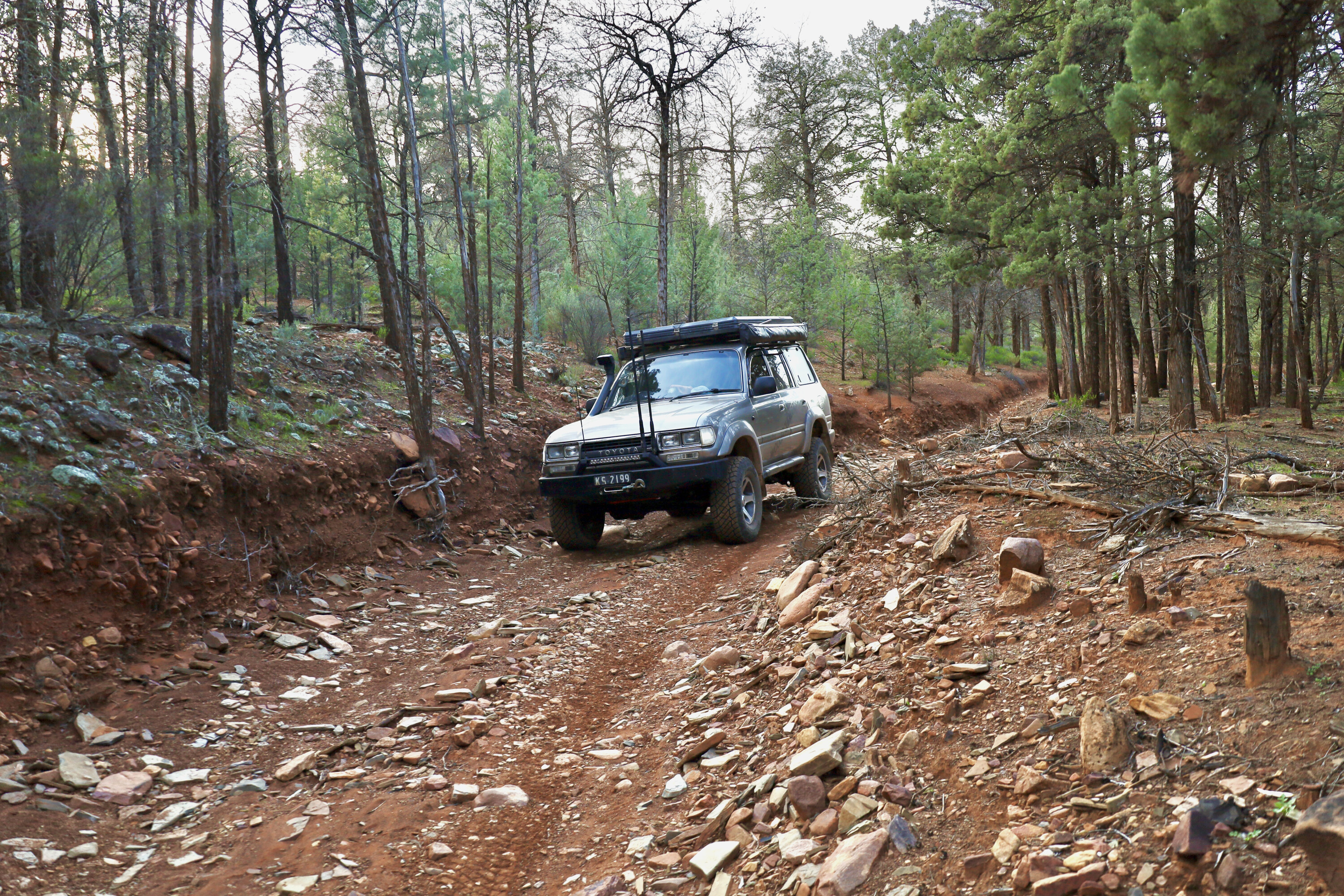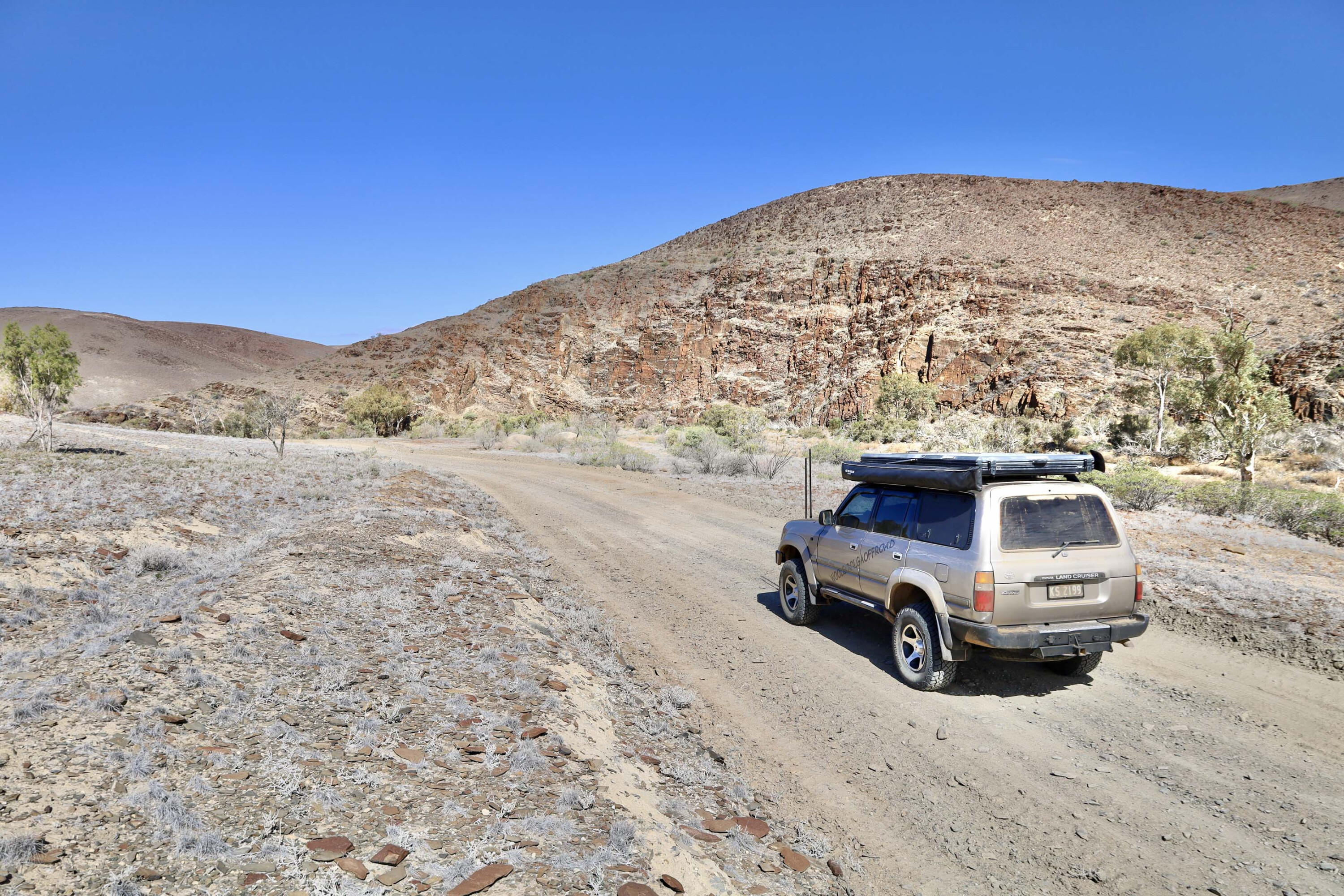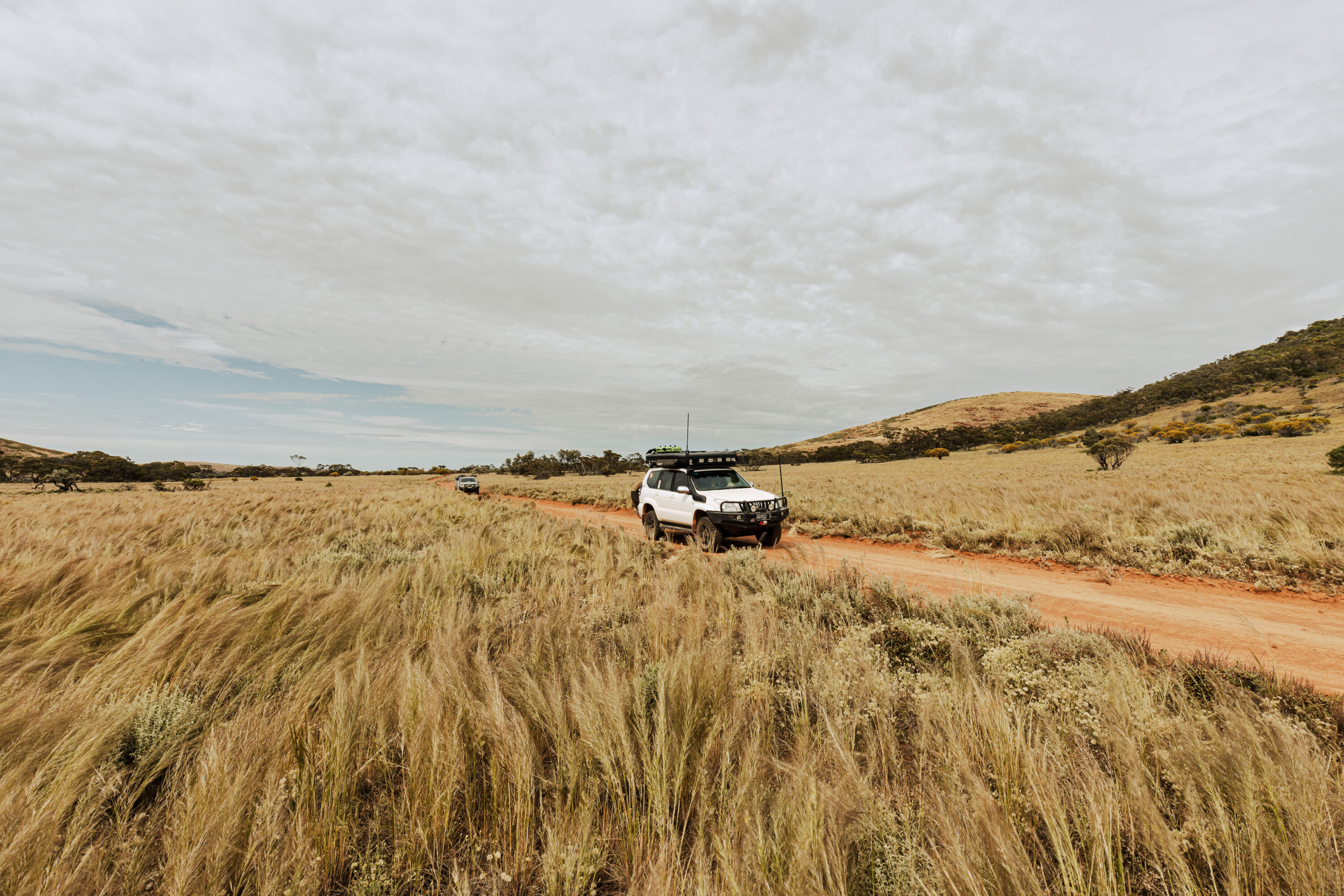PICTURE this: crystal-clear water, stunning beaches rich in piscatorial delights, secluded coves, rocky headlands with cliff-top single tracks, and some of the best sand-dune driving you could possibly hope for … oh I forgot one thing, no crowds!
Sounds ideal, doesn’t it? Well, it is as close as you can get to four-wheel driving Mecca and it should definitely be on your destination list.
We had just come off the fantastic Googs Track and restocked in the coastal town of Ceduna, and with a few weeks of leave still left it made perfect sense to push on for some more of South Australia’s treats.
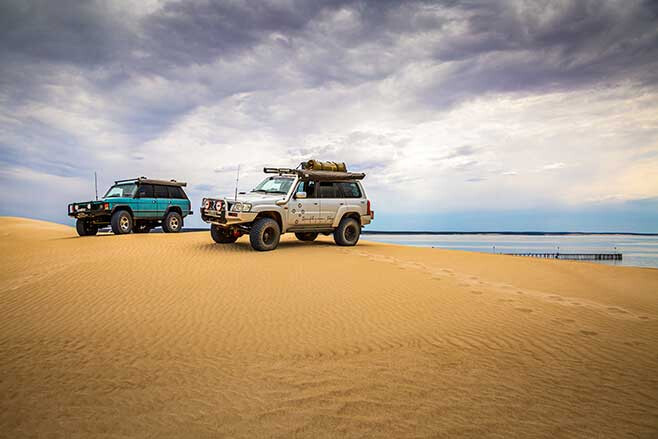
After a short Eyre Highway leg, we turned off for the tiny township of Fowlers Bay. There is not much here, other than a small basic van park and a little store and café, so after a quick exploration of the long jetty (from which one of the best southern right whale watching tours departs during the season) we headed for the entry in to the dunes which form the backdrop of the town. Airing down to 16psi and selecting low range, we climbed up into the dune system for our first taste of the incredible 4WDing to follow.
When you are only two minutes into the driving and already stopping to grab the camera, you know you are on to a winner, and that’s exactly what we were doing. Perched atop the dunes above the town with panoramic views over the ocean and surrounds, we all got some incredible images and the smiles were abundant and genuine – this is what owning a 4×4 is all about.
Staying in the dune system we tracked onward and within a few kays were greeted with the first of many stunning beaches on this trip. We needed to travel the length of this beach to the distant headland to reach our first camp, and it is here that I will give you a handy warning.
A TRACTOR AWAITS
THROUGHOUT the year in certain conditions, ribbon seaweed gets washed up on the shore, creating a deep blanket that covers the sand. Over time the weed that does not get washed back out to sea becomes covered in sand.
The danger here is that it may seem like you are driving on hard-packed, smooth sand below the high-tide mark, which is common practice on many beaches across Australia (particularly the east), but in fact you may only be driving on a thin, sandy crust suspended on a vehicle-swallowing bed of rotting weed. Believe me, the old tractor you see parked up in Fowlers Bay makes a solid living, not from farming, but from 4×4 beach recoveries!
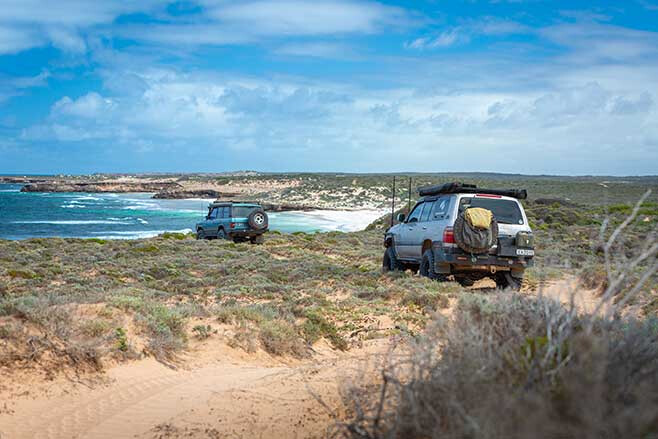
There is a well-worn beach track above the high-tide mark that is your safest bet for avoiding strife, but remember, this is generally not advisable or even allowed on many beaches as it is home to nesting shorebirds and is hard, thirsty going for a 4×4.
TOP 5: Tips for driving on sand
I decided to once again test this out to demonstrate to my travelling companions who had not seen this before, and gingerly started to dip the BFGoodrich paws lower toward the water as I was driving along, and pretty quickly the rig began to sink requiring some full-throttle and corrective steering to get back onto the harder stuff. It’s a strange phenomenon and completely opposite to what you would experience on Fraser Island’s beaches for example.
With that fun out of the way, it was time to really appreciate what we had here, a nice sunny day, with a mildly stiff onshore breeze on this beautiful golden beach and water clarity to rival the best in the country. Stunning – and we had not seen another soul.
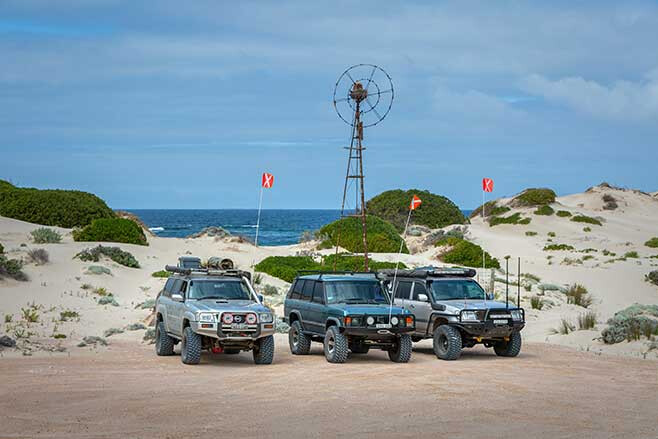
Tucked in behind the dunes of the next beach along are several bollard-ed campsites, one with a long-drop toilet. Typical of the Great Australian Bight, tall trees are not to be found close to the shoreline due to the frequent high winds, but there is a solid smattering of saltbush, grasses and shrubs that offer mild protection but no shade. So, if travelling in the hotter months anywhere along this coastline, make sure you take your own robust shelter that can handle high winds.
The plan for the rest of the trip was to head west, following and exploring as many of the coastal tracks as possible. The following morning, our minds were blown away as we neared the shore to discover we were atop a cliff with a rocky, single track only metres from the steep drop-off to the ocean below. Wow, this is as good as off-roading gets.
Once again, the cameras were out to capture these stunning views and, honestly, we just spent the rest of the next few days eating up the endless cliff-top, beach and dune driving at a leisurely pace. I have travelled most of Australia in a 4×4 and I would rate this as one of the top three touring experiences in this land. Let me put it this way, at times it felt so good it felt illegal, but rest assured it is not. Perhaps the notable absence of other travellers added to the charmed feeling.
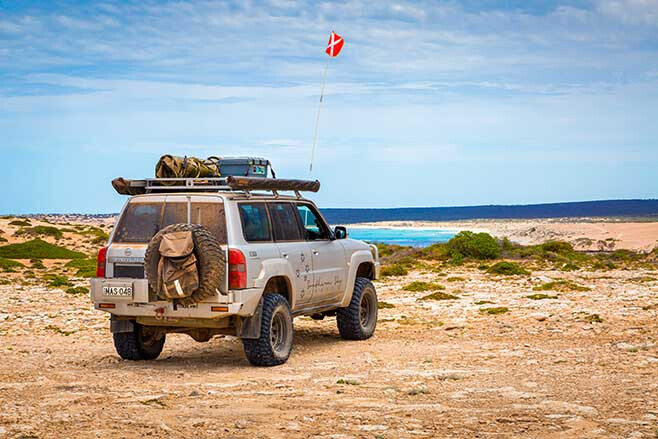
At times we came across beautiful secluded and sheltered little beaches, surrounded by steep headlands, some we stopped in to wet a line or, in one case, simply drift asleep on the sand bathed in sunlight and the sounds of breaking waves. Bliss. At the end of each day we managed to easily find an idyllic bush camp, most of these happened to be along the inland tracks in amongst thicker and taller vegetation, as we wanted to escape the wind, but we were never far away from the coastline.
DOG FENCE
SOMEWHERE along the way we realised that as much as we wanted this to last forever, it could not. We needed to put a punctuation mark on it, so looking at the maps we decided we would start our trip home after reaching the very end (or start) of the Dog Fence. Its origin traces back to the early pastoralists in the late 19th century (who constructed the original dingo-proof cells) and a Royal Commission in 1894 on the impact of dingoes and other vermin upon grazing lands – which subsequently led to a more concerted effort in fencing.
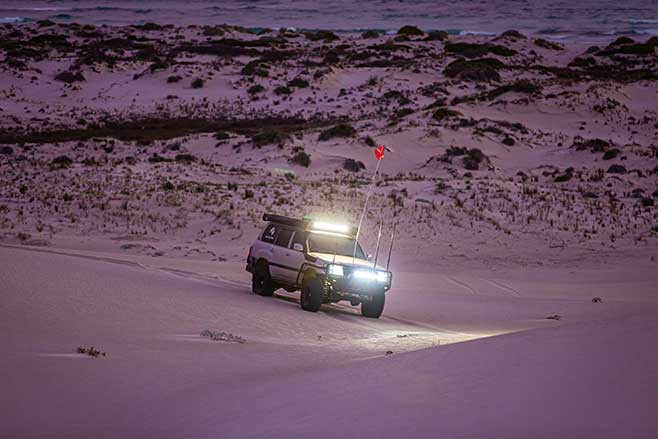
So, with that locked in and with growing heavy hearts, we made our way past one last notable landscape, the Wonginya Sandhills. Well, apparently not many people venture out here, as the track was so overgrown, littered with fallen timber and reclaimed by the movement of the dunes that we were frequently stopping to clear the way ahead and scout out a driveable line in the dense timber and encroaching sand at the back of this extensive system.
While challenging at times and most certainly harsh on the paintwork (don’t even think about it if you are precious about your Duco) it was seriously fun and engaging driving, with one last stunning bush camp to boot before finally reaching that famous fence.
I said it years ago and now I find myself saying it again, “Fowlers Bay, I will be back again.” It is incredible!



